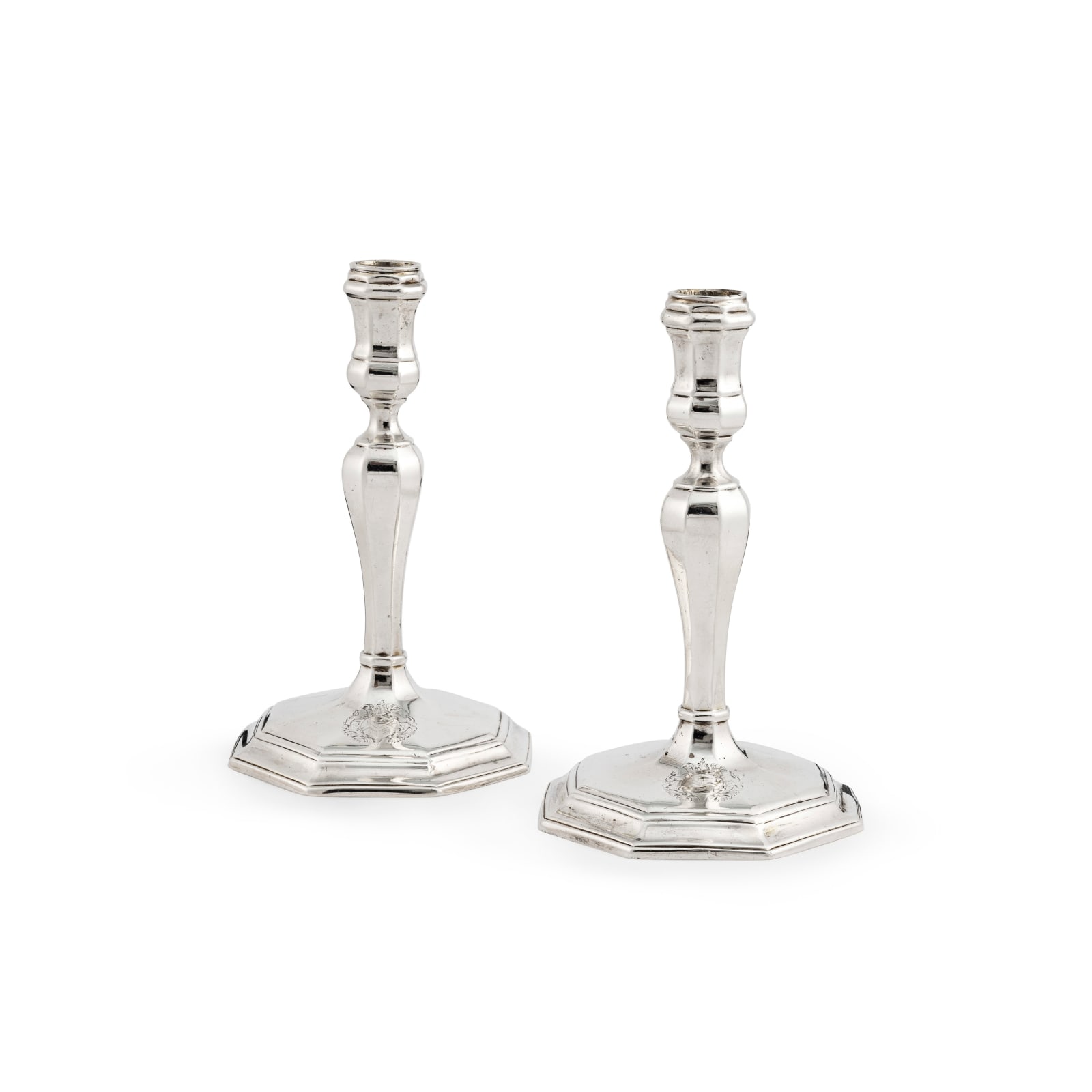MATTHEW COOPER
Maker’s Mark of Matthew Cooper
London, 1717
Height: 18.42cm (7.25in)
Total Weight: 27.7oz (861.47gr)
This is a magnificent and rare pair of George I octagonal candlesticks. These were made in London
in 1717 by the specialist candlesticks maker, Matthew Cooper. Geometric silver was popular in
London in the early 18th century for a very short period and became unfashionable by the mid
1720s. It was extremely hard to make as, in this period, the silversmith would have created the
geometric shape from hammering and raising one flat piece of silver, unlike casting that was done
later in the century, therefore meaning that the workmanship had to be perfect to create the designs.
These candlesticks are particularly interesting as they are quite different from the more common
octagonal candlestick design. They have a fabulous wide stepped base bearing an original engraved
crest and then above this they have the most fabulous slender baluster stem which is extremely rare
to see. The candlesticks are made in Britannia standard silver and are fully marked to the underside.
They have survived in the most beautiful original condition and retain a fabulous patina and colour
to the silver which is so important with pieces made in the early 18th century.
Matthew Cooper
Matthew Cooper was an English silversmith active in the late 17th and early 18th centuries,
renowned for his craftsmanship in creating candlesticks and other silver pieces. Born to William
Cooper of Newport Pagnell, Buckinghamshire, Matthew was apprenticed to silversmith Robert
Cooper on January 20, 1693. Later that year, on May 19, his apprenticeship was transferred to
Joseph Bird, under whom he honed his skills. He gained his freedom on April 21, 1702, and entered
his first mark as a largeworker on May 2, 1702, with an address in Foster Lane, London.
Throughout his career, Cooper was actively involved in the silversmithing community. He became a
liveryman in October 1708 and was a signatory to petitions addressing challenges faced by local
craftsmen, such as the competition from "necessitous strangers" in 1711 and concerns over assaying
work by foreigners not having served seven years of apprenticeship in 1716. In 1713, he served as
the churchwarden of St. John Zachary. His son, Robert, followed in his footsteps, apprenticed to
him on July 15, 1725.
Cooper's work is highly regarded, with his mark frequently found on candlesticks, a specialty he
shared with his mentor, Joseph Bird. Despite his success, records indicate financial difficulties later
in life, with a bankruptcy declared in December 1731 while he was still operating in Foster Lane.
Nevertheless, Matthew Cooper's legacy endures through his exceptional silver creations, which
continue to be celebrated for their quality and design.
Join our mailing list to be the first to know about our latest treasures
* denotes required fields
We will process the personal data you have supplied to communicate with you in accordance with our Privacy Policy. You can unsubscribe or change your preferences at any time by clicking the link in our emails.
